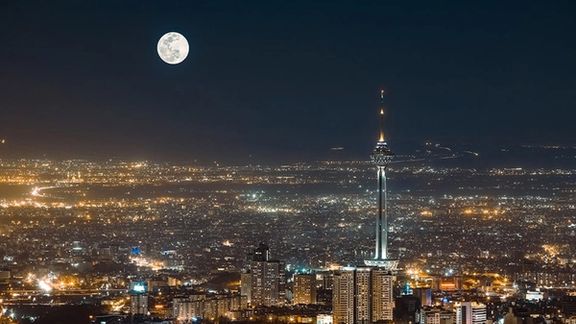According to reports from Iranian media and residents, working-class neighborhoods in southern and western Tehran are experiencing up to four hours of daily blackouts, while more affluent districts in the north remain largely unaffected.
This disparity, once a topic of speculation among citizens, has now been corroborated by the reformist leaning Ham-Mihan newspaper, and acknowledged in comments by both energy officials and lawmakers.
A recent field investigation by Ham-Mihan found that nearly 75% of documented blackouts in Tehran province during the first two months of the Iranian calendar year (started March 20) occurred in lower-income areas. In contrast, power remained uninterrupted in wealthier northern districts, even during periods of peak demand.
While Tehran Electricity Distribution Company had released a blackout schedule for spring, residents across marginalized neighborhoods say cuts have been occurring unpredictably and far more frequently than indicated.
“We have power outages twice a day — sometimes lasting up to two hours each,” a resident of Islamshahr, a southern suburb, wrote online. Meanwhile, a resident in District 2, in northern Tehran, reported no outages since the start of the blackout cycle.
The discrepancies have sparked a wave of criticism on social media and from public figures.
Hossein Selahvarzi, a prominent economist and former head of Iran’s Chamber of Commerce, wrote: “If it is true that outages in the south of Tehran are more frequent than in the north, then our problem is not only energy imbalance — it is also a failure of social justice.”
In comments to Ham-Mihan, a senior official from Tehran’s regional power grid admitted the blackout pattern is not accidental. “To maintain network stability, we concentrate outages in outlying districts,” the unnamed source said.
“Blackouts in central or northern Tehran have political and media consequences that we try to avoid.”
The issue of unequal energy access is not confined to Tehran.
Hussein Haghverdi, a member of parliament representing the towns of Malard, Shahriar, and Qods in Tehran province, has publicly accused the Ministry of Energy of discriminatory energy allocation.
In a letter to Energy Minister Abbas Aliabadi, Haghverdi said that while the capital’s industrial zones faced a 50-megawatt blackout quota, neighboring residential and industrial towns were subjected to four times that amount.
“This vast disparity is unacceptable and has caused widespread dissatisfaction,” he wrote.
With temperatures rising and demand for cooling surging — particularly through water-intensive swamp coolers — Tehran’s daily water usage has already exceeded 3.1 million cubic meters.
Iran’s hydroelectric capacity — once a key component of the energy mix — has been severely curtailed by a historic drought.
Officials have warned that continued overconsumption could lead to even harsher cuts, with punitive 12-hour blackouts possible for chronic overusers.
But critics argue that the current approach to energy rationing lacks transparency and reinforces systemic inequalities.
“You can’t ask citizens to sacrifice while shielding elite districts from the consequences,” said an environmental policy expert in Tehran who requested anonymity. “This is not just a technical failure — it’s a governance issue.”
With no immediate relief in sight, the government is under mounting pressure to ensure that conservation efforts — and their consequences — are distributed fairly.
As one Ham-Mihan editorial put it: “The blackout map is becoming a social map — and it is illuminating more than just who has electricity.”









